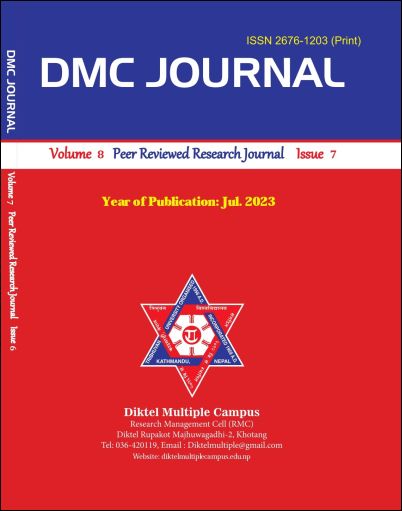Chamling and English Possessive Pronouns: A Contrastive Analysis
DOI:
https://doi.org/10.3126/dmcj.v8i7.62438Keywords:
Dual, inclusive, exclusive, possessive pronouns, possessive adjectivesAbstract
This study aims to explore and compare the Chamling possessive pronouns with English possessive pronouns. Data on possessive pronouns in the Chamling language were collected from seven native speakers and compared to English possessive pronouns gathered from secondary sources. The contrastive analysis of Chamling and English possessive pronouns reveals differences in number, position, and gender. Chamling possessive pronoun consists of inclusive, and exclusive systems, according to the involvement of the addressees, whereas the English possessive pronoun does not have such a system. In addition, the Chamling possessive pronoun comprises singular, dual, and plural forms, however, the English possessive pronoun consists of only singular and plural systems. The number of Chamling possessive pronouns is more than that of English, with ten and six respectively. English pronouns are used in the initial position as the subject and the final position as the object of the sentences, whereas Chamling possessive pronouns never occur in these positions. In English, the third-person singular possessive pronoun has gender distinctions with "his" for masculine and "hers" for feminine. However, Chamling's possessive pronoun does not have such distinctions.




